
OceanAlpha USV Validates Long-Range Survey Capability in Malaysia
USV directly addressed a critical constraint for offshore marine surveys: crew dependence and costly support vessels typically required for operations beyond line-of-sight (LOS) control range. By successfully conducting a survey mission 33 kilometers offshore while maintaining continuous, stable satellite communications and real-time payload data transmission, the L25 validated reliable Over-the-Horizon (OTH) capability essential for large-scale or remote survey areas.In the congested waters of Port Klang, the vessel’s perception systems enabled autonomous navigation around moored vessels while dynamically
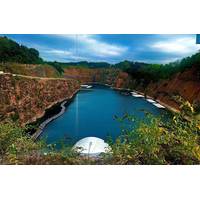
Teledyne Marine autonomously surveys DEEP's quarry lake in Wye Valley
onboard winch enabled remote deployment, and near real-time profiler data was accessible via smartphone for immediate quality control.The electric Otter Pro vessel, launched via crane, operated both locally and remotely. During surveyor breaks, operators in Norway controlled the vessel through satellite communications, leveraging its onboard cameras and collision avoidance radar to navigate autonomously. The survey produced high-quality data, covering nearly the entire body of water in a single pass
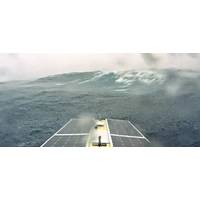
USV Hypoxia Mapping Capabilities Verified by Manned Vehicle
and satellite connections to servers at USM for real-time quality assurance.Simultaneously, USM and NOAA collected data via a crewed vessel along several sampling sites to compare and validate data collected by the SP-48.The SeaTrac SP-48 USV was configured with a deep keel and redundant satellite communications for offshore operations. It was fitted with an AML-3 Sonde (with wireless charging capabilities) as well as conductivity, temperature, depth (CTD) and dissolved oxygen (DO) sensors. Auxiliary sensors for additional data collection included the Teledyne Workhorse Monitor 300 kHZ ADCP, SeaView
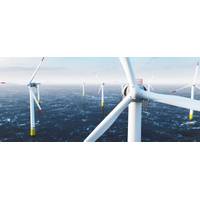
Using Ocean Robots to Dive into Offshore Wind Farm Wake Effects
low-powered, using changes in buoyancy and their fins, to see-saw through the water column or months on end at depths down to 1,000m.This starts on pre-programmed routes, but because they reach the surface every few hours, they can be given different missions by scientists on shore via satellite communications.For this project, two were deployed from Arbroath to head out and patrol the area being studied, an area roughly 70m deep in the Firth of Forth, from April to August 2023, and then from June to August this year.Low Power, but Packed with SensorsDespite their small size and low power use

Autonomous Survey Technology: Cutting the Umbilical
test (CPT) device, Infinity CPT 250. Last year, for the Ossian wind farm, deep push seabed CPTs, seabed seismic CPTs and vibrocore operations were carried out remotely using over-the-horizon commands sent via a remote-control system.Recent advancements in AI and in low orbit, low latency satellite communications which have greatly enhanced remote control solutions and real-time data transfer have made it possible to do this. Infinity CPT and other payloads communicate directly with control systems on the mother vessel via a lift umbilical. The vessel's control systems communicate via satellite
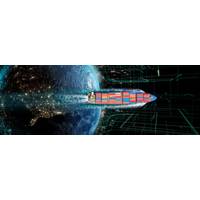
Inmarsat Launches NexusWave to Boost Maritime Communications
Mobile satellite communications provider Inmarsat, a Visata company, has launched NexusWave, a fully managed connectivity service designed to improve maritime communications and global coverage at sea.NexusWave is underpinned by a bonded multi-dimensional network, offering high-speed connectivity, unlimited data, global coverage, and ‘secure by design’ infrastructure, according to Inmarsat.Delivered by a single provider, NexusWave offers fully managed service that seamlessly integrates multiple high-speed networks in real time – Global Xpress (GX) Ka-band, low-Earth orbit (LEO)

Chance Maritime Technologies' MC-29 USV Completes Long-endurance Testing
included 24 operational days of 24-hour operation in Vermilion Bay and the Gulf of Mexico.This new class of utility vessel offers kilowatts of continuously available payload power, 30+ day endurance, a 19” payload rack, moon pool, active gyro stabilization, and high-bandwidth Starlink satellite communications.Stuart Chance, CEO of Chance Maritime Technologies, said, “We’re extremely excited with the results of our endurance testing. The MC-29 represents an incredible effort by the talented team at Chance Maritime to design, build, and operate a flexible, durable and truly capable
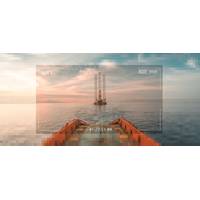
Remote Operations: Challenges & Opportunities
with Medium Earth Orbit (MEO) services, provide higher throughput and lower latency than existing Geostationary (GEO) VSAT satellite services, enabling a new layer of complex applications including media transfer, live communications, and monitoring. For remote operations, the load on satellite communications is far higher due to the requirement for exchanging large volumes of data between sites, therefore bandwidth efficiency – no matter the network – will be key as global demand continues to grow. The technology itself is relatively easy to adopt, but for some organizations

Subsea Robotics: Aquanauts, Hydronauts, Roll Out
tool deployment includes supervised autonomy and tool control using Nauticus’ acoustic communication networking technology.This is wrapped in with wider over the horizon communications – terrestrial and underwater – to support the ability to operate without an umbilical. While satellite communications are there, the rollout of the likes of Starlink will provide more inexpensive ways to transmit more data to the surface, says Radford. For through-water communications, Nauticus has been working with Schlumberger, from whom Nauticus has licensed use of an underwater modem previously tested
 February 2025
February 2025





